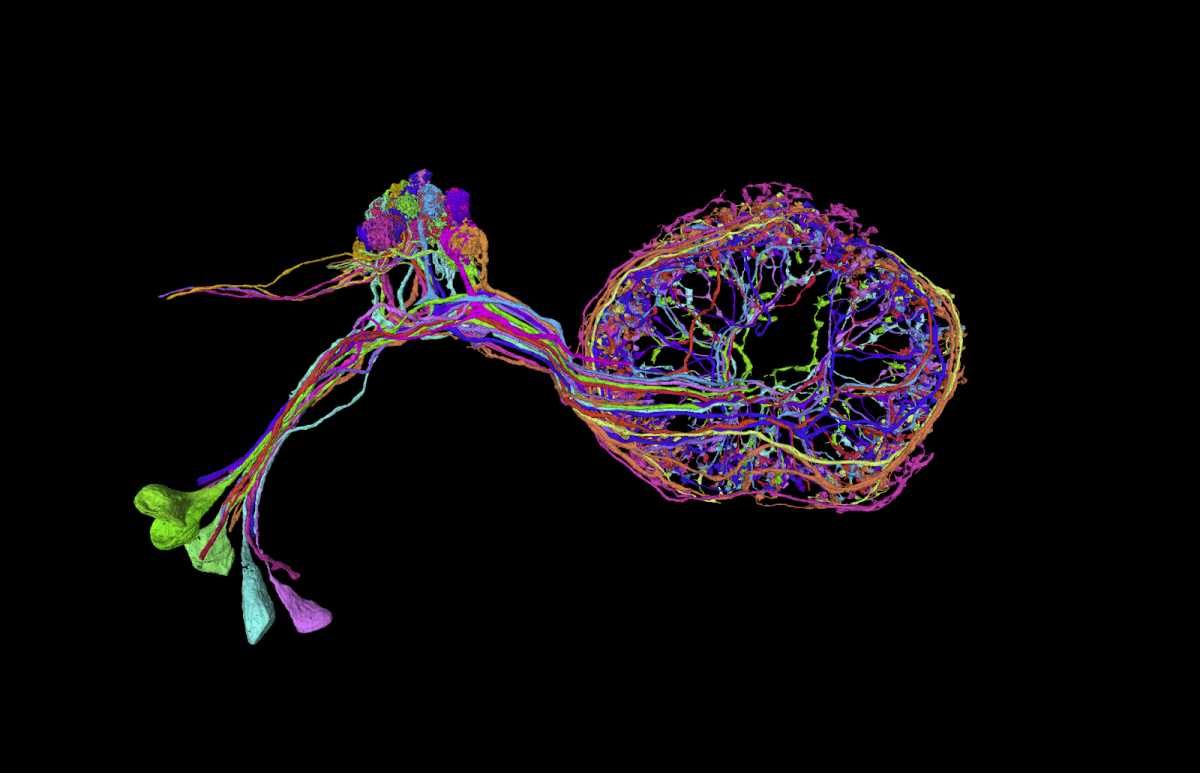by Stephen Plaza, Manager of FlyEM & Connectome Research Team Leader
June 17, 2019
You toil for years perfecting brain sample preparation and imaging techniques. Applying the latest deep learning techniques to your data produces amazing automated neuron segmentation, sometimes to near perfection (see figure below). Now real neuroscience can begin … well not necessarily.

Despite the amazing advances in the connectomics field, the largest comprehensive connectomes produced are only hundreds of neurons, with a few larger efforts driven mostly by manual tracing. Our group is now reconstructing a dataset encompassing a significant portion of the fly brain (the “hemibrain” dataset) with over 20,000 neurons, where the connectomics group at Google generated a state-of-the-art initial image segmentation. While some neurons appear to segment perfectly, there are also examples of major morphological errors, large false mergers or false splits. We cannot simply use, as is, the automated connectivity mapping.
Furthermore, even if there are no obvious errors, it is often difficult to confidently assess accuracy without extensive validation. (In the fly, we can often validate morphology using confocal data of different neuron types, where available.) . The situation undoubtedly improves after more experience as one could presumably bootstrap one reconstruction from an earlier connectome.
Put simply, we require at least some validation for the first connectome of a given brain region using new automated techniques. (We will elaborate on validation strategies in future blog entries.) However, even without extensive validation, we can do the following:
- Explore the broad connectivity between brain compartments (the projectome), assuming several long-range neurons are mostly segmented correctly.
- Similarly, analyze the boundary between different compartments, as general statistics of the interface are likely minimally impacted by a small number of false merges and splits.
- Determine the density of synaptic connectivity across each compartment.
- With advanced semi-automated editing tools (such as our NeuTu and neu3 tool), sparsely trace individual neurons (often in minutes) to answer specific connectivity questions. This compares favorably to the days/weeks/months required for purely manual tracing.
- Match (partially) segmented neuron morphologies to previous reconstructions (from EM or light) or to other neurons in the same dataset using a tool like NBLAST.
A great segmentation does not (yet) equal a connectome. But we exploit a great segmentation to enable other discoveries with minimal effort.
